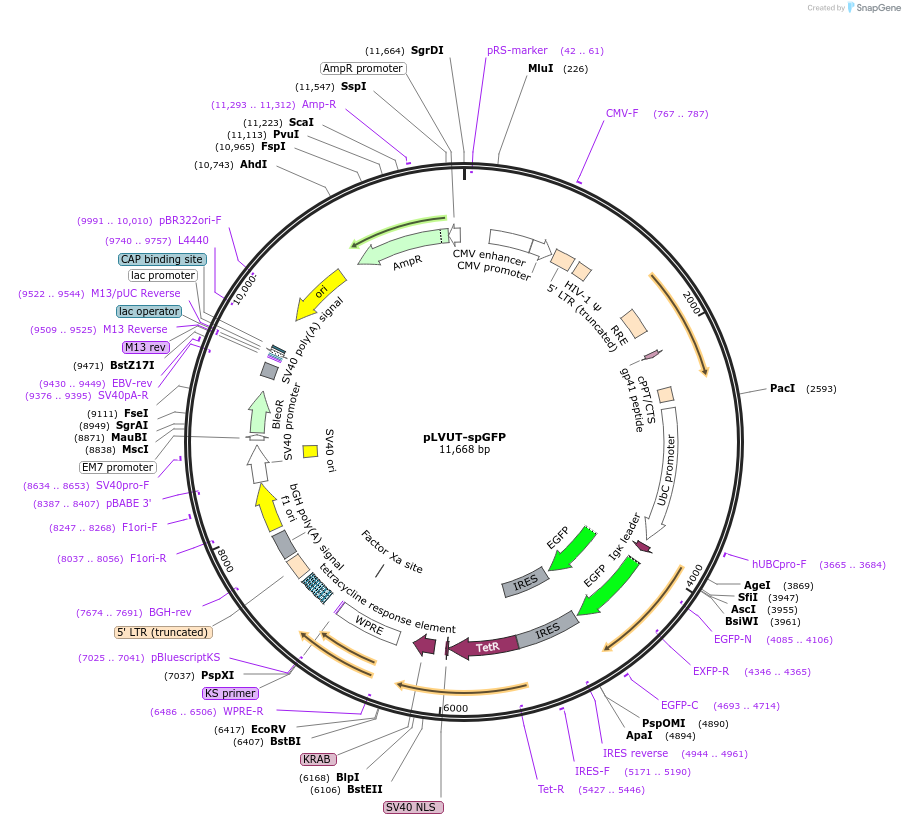pLVUT-spGFP
(Plasmid
#225486)
-
PurposeTet-on lentiviral vector for controlled expression of secretable and permeable EGFP
-
Depositing Lab
-
Sequence Information
Ordering
| Item | Catalog # | Description | Quantity | Price (USD) | |
|---|---|---|---|---|---|
| Plasmid | 225486 | Standard format: Plasmid sent in bacteria as agar stab | 1 | $85 | |
Backbone
-
Vector backbonepLVUT-tTR-KRAB
-
Backbone manufacturerAddgene Plasmid #11651, PIs Patrick Aebischer and Didier Trono
- Backbone size w/o insert (bp) 11497
- Total vector size (bp) 11664
-
Vector typeMammalian Expression, Lentiviral
-
Selectable markersZeocin
Growth in Bacteria
-
Bacterial Resistance(s)Ampicillin, 100 μg/mL
-
Growth Temperature37°C
-
Growth Strain(s)NEB Stable
-
Copy numberHigh Copy
Gene/Insert
-
Gene/Insert nameIgκ leader and TAT peptide
-
Alt nameIg kappa-TAT
-
SpeciesM. musculus (mouse)
-
Insert Size (bp)167
- Promoter Human ubiquitin C
-
Tag
/ Fusion Protein
- EGFP (C terminal on backbone)
Cloning Information
- Cloning method Restriction Enzyme
- 5′ cloning site AgeI (not destroyed)
- 3′ cloning site NcoI (not destroyed)
- 5′ sequencing primer tgaagctccggttttgaact
- 3′ sequencing primer cgtcgccgtccagctcgaccag (Common Sequencing Primers)
Resource Information
-
Supplemental Documents
Terms and Licenses
-
Academic/Nonprofit Terms
-
Industry Terms
- Not Available to Industry
Trademarks:
- Zeocin® is an InvivoGen trademark.
These plasmids were created by your colleagues. Please acknowledge the Principal Investigator, cite the article in which the plasmids were described, and include Addgene in the Materials and Methods of your future publications.
-
For your Materials & Methods section:
pLVUT-spGFP was a gift from Robert Gross (Addgene plasmid # 225486 ; http://n2t.net/addgene:225486 ; RRID:Addgene_225486) -
For your References section:
C3 transferase gene therapy for continuous conditional RhoA inhibition. Gutekunst CA, Tung JK, McDougal ME, Gross RE. Neuroscience. 2016 Dec 17;339:308-318. doi: 10.1016/j.neuroscience.2016.10.022. Epub 2016 Oct 13. 10.1016/j.neuroscience.2016.10.022 PubMed 27746349





